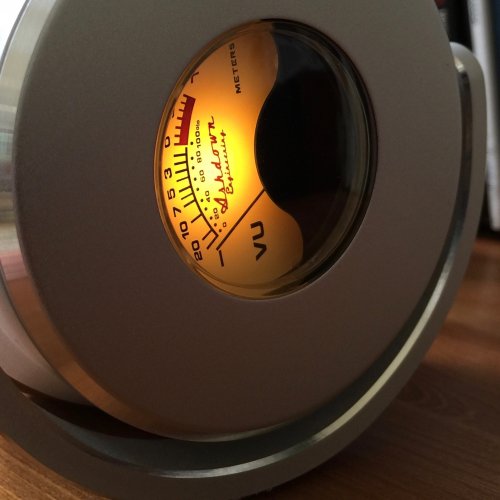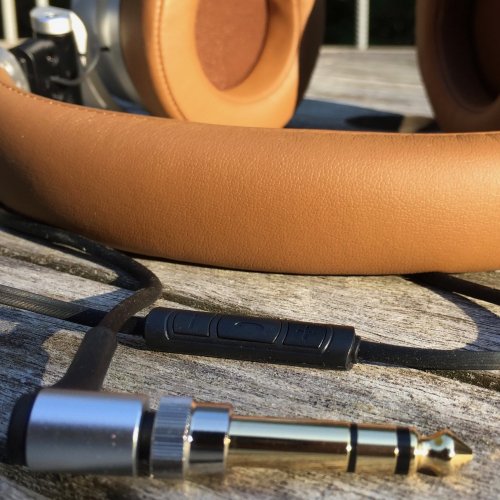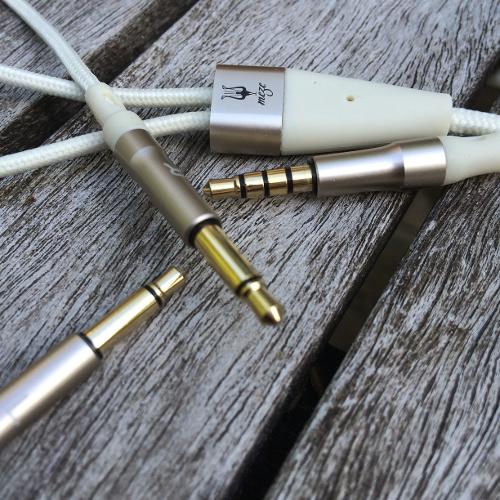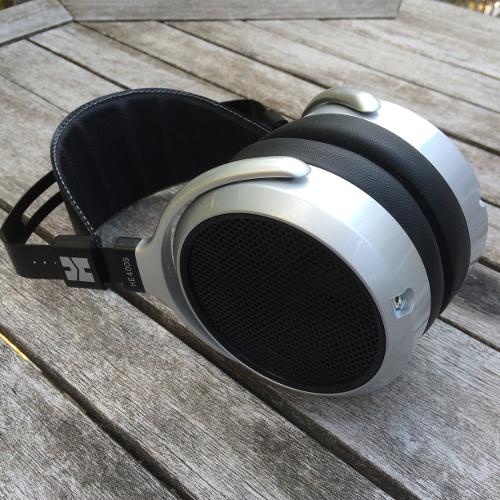
COMPANY: Beautiful Audio
COMPANY WEBSITE: www.beautifulaudio.biz
MODEL: Leather and merino wool headband covers and ear pads with customizable foam inserts
COST: 2 ear pads + 2 densities of inner foam: $115 USD, headband cover: $60 USD
TYPE: Grado headphone accessory
COLOURS: Merino: Brown, Black + Grey, Green + Black, Blue + Black, Red + Grey. Leather: Black, Coffee, Yale Blue, Olive Green, Redwood, Burgundy, Indigo, Gold, Silver, Pale Brown, Byzantium, Carnelian, Rufous, Sparrow Grey, Stone, Sand
INCLUDES:
Headband Cover
2 Ear Pads
2 pairs of foam inserts for the ear pads of differing densities: very soft memory foam (closed cell) and harder (open-cell) foam
Overview and Philosophy
The Beautiful Audio headband cover and ear pad sets are unabashedly luxury products, and at first glance, their real intent and value may not be apparent. I believe to truly appreciate these unique offerings, it helps to glimpse a bit of the man behind them. An audiophile and an artisan, Silvian has strong beliefs about fashion, audio and the wearability of Grado headphones. So, what’s Silvian’s philosophy? I believe it can perhaps be simplified as: color and comfort. To best understand his goals, I’ll share some of our communication so you can read Silvian’s own words.
“My goal… is to sort a problem for some of those who have it.”
“I bought my first Grado (225, not "i", not "e") maybe about 15 years ago. I liked the "live"-ness of the sound, and I still do. But soon I realized that I couldn't wear them for more than a few minutes because of how uncomfortable, how rough they were…”

“Deep down, what I want to do by using all these fine materials and colors is to get to what I believe it is a huge untapped market: women... if men are so silly about materials and colors… And, of course, those who simply understand the value (durability, feel, looks) of what I'm proposing. As many should know, it is expensive to buy cheap stuff…”
“But I really hoped the males of this species are more open to (some of the) colors. And they are, but not in the western world, where Grado mostly sells. You won't believe the "likes" I got on Instagram especially for the color versions: males from many of the Arabic countries, India, Indonesia. What I hoped from the women, was that the husbands will show their wives what I do, just for fun, and the wives would think "Hm, If only this guy was doing something that I might wear.”
“And with headphones, because they are wearable, the look and feel is critical. And as I do care about sound, perhaps this is a good way to show them how good their music can sound. It pains me when I see people wearing what I know is crap! … I chose to go with what I like, from well-known brands, with proper R&D behind their products, and make them a little better where they are compromised...”
Let’s start our understanding there. Silvian is manufacturing a product designed to greatly improve the questionable (and unfortunately legendary) Grado comfort while elevating headphones into the world of fashion utilizing both rich color and luxury materials, and finally, to improve the sound quality. Lofty goals indeed.
Design, Build Quality and Durability

The ear pads will fit the entire Grado range, while the headband cover will fit the SR325 and up without modification, as this is where the stock band transitions from vinyl to leather. The cheap vinyl band found on the lower models can fairly easily be trimmed to fit with scissors and thickened with tape (or as I did with adhesive Velcro) to approximate the shape and thickness of the leather band to properly fit the Beautiful Audio headband cover.

Leather is fairly commonly used in products in contact with skin, such as high-end ear pads and bands, but the use of merino wool is certainly unique. Merino is one of the most hard-wearing natural fibers; exceptionally breathable, temperature regulating, hypoallergenic, and luxuriously soft. It is used for baby blankets, underwear, shoes and outdoor garments.
Let’s not mince words here, these are beautiful, opulent, and exquisitely made additions to your favorite pair of Grados and are available in a vast array of colors. Full disclosure, I’m part of the North American male demographic (which Silvian speaks of) that almost never chooses anything but traditional black, brown and grey color options. Presented with the wide range of color possibilities, I was drawn to the olive green leather and (with Silvian’s advice) agreed on the blue-black option for the merino (which has very much grown on me – it’s very eye-catching on the silver 325's). Check out all the color options on the Beautiful Audio website, they really are gorgeous; if only I was a little braver.

Another unique aspect is that these may be the first truly customizable headphone ear pads available. The user can easily adjust the inner foam density to their preferred softness and sound signature. Every pair of ear pads is delivered with two sets of foam inners: very soft memory (closed cell) foam and firmer, open-cell foam. Silvian supplied me with 4 foam densities so I could provide feedback on the comfort and sound for each option. If you are handy with an X-Acto knife or even scissors, you could fairly easily DIY new pads from any foam you want to try.
The comfy, padded headband cover wraps tightly around the original, and is locked in place with snap-on boning and closes securely with magnets at both ends. Note that some readjustment of the ear cups will likely be required as the padding raises the headphone position slightly.
Durability is also superior to stock, as Grado foam cushions disintegrate over time and with usage. Silvian adopted a ‘no compromise’ approach to materials and design and decided to opt for real leather over the synthetic protein options available. Leather lasts indefinitely with moderate care, ages well and it feels gorgeous. Merino wool is one of the most resilient, elastic, odor resistant, and stain resistant natural fibers. You can clean merino by soaking in warm water for a few minutes with a little mild (wool) detergent. Leather can be cleaned and maintained with specialized leather products, such as for leather jackets, shoes or furniture. These covers should last for many, many years.

Once you grasp the workings of the ingenious folded shape of the ear pad casing, removing and installing the inner foams is a snap. It is worth highlighting just how clever the design is and how well executed it is in practice. The cover wraps around the foam inner and creates a pocket that captures the edge. It appears to be a single sealed piece, while the foam is entirely hidden within. Installation of the headband cover and ear pads onto the headphone is trivial; they fit perfectly and secure in place with little effort.
Comfort and Fit
For clarity, stock Grado foam pads can be defined as:
S-Cushion (‘comfy’ or ‘flat’ pad) is stock on the Grado SR60, SR80, and SR125i.
L-Cushion (bowl) is stock on the SR225, SR325, RS1, and RS2.
G-Cushion (bagel or salad bowl) is stock on the GS1000 and PS1000.
Typically the S- and L-cushion pads are considered on-ear and the G-cushion pads are over-ear. Silvian styled his ear pads after the L-cushion, however, he made a few improvements that make them a bit more ‘over-ear’ feeling. By increasing the depth to 25mm (from the stock 15mm) there is less chance that your ear will touch the driver grill, and depending on firmness of the inner foam, the pads will either compress less and maintain their shape, or will softly conform to your particular ear shape.

The stock Grado foam is made up of multiple densities and the top layer is stiff and somewhat gritty feeling. The combination of the supple feel of the silky outer materials, paired with the softer foam inserts within the ear pads, is nothing short of transformative. The headphones that have spent the most time on my head are some of the most widely praised for comfort: the Beyerdynamic DT880 and the Sennheiser HD650. Both use large cups to surround the ear and velvet-like material to touch the skin, so it is unexpected that Grados can displace them as the most comfortable headphones I’ve worn. The 12mm thick padded headband cover used with the relatively heavy metal-bodied SR325 utterly offsets the weight, and when matched with the ear pads, transform it into a sublimely comfortable wearing experience. Silvian’s products installed on lighter wooden cups ensures that the headphones float lightly on the head and feel lavishly cozy. I greatly prefer the softer foam inserts for comfort, but even the firmer inserts are a great improvement to the stock ear pads.
Comfort is about equal with both the merino and the leather outer shells, and (have no fear) the wool remains soft and never feels scratchy or itchy to the ear. The stock foam is non-breathable and leads to overheating and sweating, while merino is an extremely breathable natural material that promotes air circulation and is less prone to clamminess. The leather covers are perforated in a Fibonacci pattern because it offers the most pleasant and uniform way to distribute the holes over the conical area. One small knit-pick is that not all the holes were clear of the tiny leather punch-outs, slightly marring the nearly perfect finish.
Impact on Sound
It turns out that in addition to comfort, I also prefer the sound signature of the softer foam inserts. While slightly reducing the perceived size and creating a more intimate soundstage, they add a tangible warmth and low-end enhancement to the Grado sound. The 325’s are oft criticized for having a harsh, and somewhat fatiguing sound, and (as is typical to the Grado SR series) tend to have a boosted higher midrange and rolled-off bass response. The merino ear pads, with memory foam inserts, transform the sound signature, yielding a smoother response across the full range and an extended low end. The sound remains Grado-esque and doesn’t lose what makes Grados special, but they are undeniably improved with these modifications.

As foam hardness and porousness increases, several things change. The pads compress less, moving the drivers further from the ears and lessening the seal, which likely leads to the corresponding noticeable decrease in the low end and overall smoothness in the sound. Changing to the leather exterior (from merino) further alters the sound presentation (albeit fairly subtly). Being less absorptive, it reflects the sound more and has a brighter presentation than the merino. It’s a wonderful match with the aftermarket Symphones drivers, sounding very energetic and lively. In the end, while critically listening I created pages of notes and charts, swapping between exterior material, inner foam and headphones, trying to determine what worked best for me. In (much boiled down) essence:
White memory foam is the softest and spongiest and will retain a deformed shape momentarily. It is the most comfortable, physically distorts the most and allows the driver to be closest to the ear. Aesthetically I prefer the softer foams because the cups stick off the sides of the head the least, giving a slimmer profile. They provide a much deeper sound than stock (to which I wrote “wow!” on first listen). They sound the most immediate, intimate and loud.
The white large cell foam holds shape a bit better and for comfort, I noted that “The stock foam continues to feel worse and worse”. The white foam smooths the mid-highs; boosts the lows, and in comparison, the stock foams are much sharper and more fatiguing to listen to. It is almost as comfortable as the memory foam, and better retains its shape.
The pink foam is very close in feel to the densest grey foam. It is a large change from the softer two foam densities and when using it I found myself more susceptible to pressure below my ear in the hollow of my jawbone. It still provides a deeper and less forward sound than the stock Grado G-cushion foams. I found little difference between the pink and the grey foam but noted that there is still a comfort improvement and they are more laid back in sound compared to stock.
Conclusion

Thank you to Silvian Serbanescu-Oasa for providing a set of Beautiful Audio leather and merino headband covers, ear pads with 4 foam inserts for review.
Clearly, these are excellent products. They succeed in every way, by making Grados far more fashionable, infinitely more comfortable and by creating a smoother and deeper textured sound. The Beautiful Audio offerings are the only user customizable ear pad option on the market. Grado customization is very popular with headphone enthusiasts, and the color, comfort and sound options available with Silvian's products are second to none.
However, before we conclude, let’s address the elephant in the room. Price. Silvian understands this concern.
“We appreciate that for many, these products will be expensive. With good quality materials, fully made in New Zealand, shipment included, 15% NZ tax included, there is no way around it. If you plan to stay with Grado for a while, we believe it is a worthy investment: you will use the same earpads, and headband, on your current and future Grado models, for many years to come.”
You can try them out for a few weeks to see if they make sense to you. The products, in good condition, can be returned within 30 days for a full refund. The buyer is responsible for the postage charge back to New Zealand.
The question then becomes one of value, rather than initial cost. Grados were my introduction into high-end personal audio and I adore their quirky, retro styling. The challenge has always been ignoring their shortcomings and focusing on their strengths; because of this, they tend to be a polarizing brand with rabid fans and those that don't see the appeal. If you love your Grados and plan on keeping them for the long term, the investment in Beautiful Audio’s products makes sense. They simply make your Grados better.
A lot better.












































TravAndAlex: Thank´s for the review; I tried it for my own with some Grado´s; Comfort is amazing (Merino in black) and sound is really great but some models change the signature, It is not a problem because we can play with them. My RS-2e is better with Beautiful Audio ear-pad but GH-2 not. I use it with my own "custom" headphone.
Silvian: Thank´s for your work, really good!!! Very comfortably Grado´s you made.